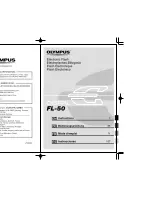
xiQ - Technical Manual Version 1.0
59
Depending on the sensor xiQ cameras support the definition of one single ROI by specifying the size (width and height) as well as
the position (based on upper left corner) of the of the sub-area. Since the utilized CMOS sensors rely on the output of full lines,
only the decrease of lines, i.e. the vertical resolution, results in an increase of frame rate.
3.5 Model Specific Characteristics.
4.2.3.
Downsampling Modes
Downsampling describes the possibility of reducing the image resolution without affecting the sensors physical size, ie. without
cropping the image. This feature is useful when optics are used, that are particularly fitted to a certain sensor size and if it is
necessary to maintain the full image circle on the sensor.
Downsampling can be achieved in two ways: binning and skipping.
4.2.3.1.
Binning
When binning is applied, the image is divided into cluster of k*k pixels, where all pixels in each cluster are interpolated and result
in the value of one output pixel. For example, a 2*2 binning produces 2*2 pixel clusters and results in images with ¼ of the
original resolution.
4.2.3.2.
Skipping
When skipping is chosen, only every n-th pixel is used to create the output image.
For example, with a 2x1 vertical skipping, every odd number line used and every even number line is skipped, resulting in an
image with half its original vertical resolution. Skipping is a faster downsampling mode, but also introduces more aliasing effects.
4.2.4.
Color and Mono Modes
All modes are provided by the xiAPI or standard interfaces using the xiAPI (please note
Each xiQ cameras supports several mono (black-and-white) output modes.
Mode
Description
RAW8
Raw sensor data, 8 Bit per pixel, single channel
RAW16
Raw sensor data, 16 Bit per pixel, single channel
10 or 12 Bit sensor output (LSB) with bit-shift up to 16 Bit
MONO8
Intensity output, 8 Bit per pixel, single channel
MONO16 Intensity output, 16 Bit per pixel, single channel
table 4-2, image formats, mono
Color camera models (MQxxxCG-xx) also support additional color modes.
Mode
Description
RGB24
RGB filtered output, 24 Bit per pixel, 3 channels
Sequence: [Blue][Green][Red]
RGB32
RGBA filtered output, 32 Bit per pixel, 4 channels, Alpha channel
equals 0. Sequence: [Blue][Green][Red][0]
RGB_PLANAR RGB filtered output with planar-oriented channels.
Format: [R][R]...[G][G]...[B][B]...
table 4-3, image formats, color
Note1: For color modes RGB32 and RGB24 the image from sensor needs to be pre-processed (de-bayering). CPU load is higher
in these modes. Setting this parameter will reset current region of interest. RGB24 is being processed from the RGB32 by
removing the unused Alpha channel creating a slightly higher CPU load then the RGB32 format.
Note2: The color filtering (de-bayering) relies on the interpolation of adjacent pixels in order to create pixel in the target image.
Pixels on the edges of the image are missing adjacent pixels and therefore cannot be used for the interpolation process. The
result is a target image that is smaller than the source image (4 pixels on all sides).
















































